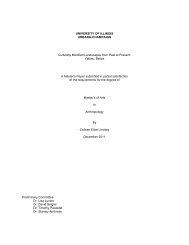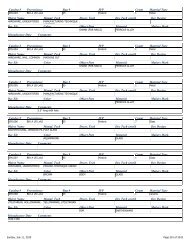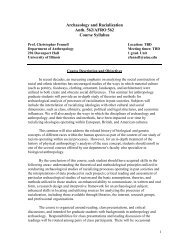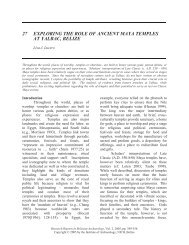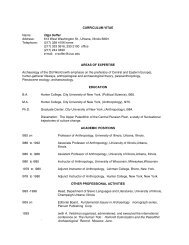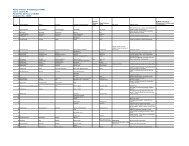Materialized Cosmology among Ancient Maya Commoners.
Materialized Cosmology among Ancient Maya Commoners.
Materialized Cosmology among Ancient Maya Commoners.
You also want an ePaper? Increase the reach of your titles
YUMPU automatically turns print PDFs into web optimized ePapers that Google loves.
Lucero<strong>Materialized</strong> cosmology149<strong>Maya</strong> also had placed white stones in the center; and one of the clustersyielded a shaped green serpentine oval disk, chert flakes, and a metatefragment. Red wares are noticeably rare – only two out of 454 sherds. Thevaried jars and bowls date from 300 BC all the way to AD 800.In an earlier deposit just southeast of the mound’s center (stratum 125),we encountered six clusters dating to c.AD 650–750 aligned north–southc.1.40 m in length (not all exposed) and c.60 cm wide. The <strong>Maya</strong> hadinverted complete but broken vessels including several brown and red jarsdating from 300 BC to AD 700, three polychrome basal flange bowls datingto c.AD 250, as well as mano, metate, and obsidian blade fragments.SC-18, a commoner residenceSC-18 has at least six construction phases with thin plaster floors andcobble ballasts with several ceramic clusters and five burials dating fromc.AD 400 to AD 1150 (Lucero, 2006: 75–6). Single or double-course boulderwalls aligned north–south provided the foundation for a wattle-and-daubstructure. Its occupants were relatively successful farmers who acquiredexotics such as obsidian objects, marine shell, and jade, hematite, and slatepieces.In a termination event dating to c.AD 700–900 northeast of the moundcenter, the <strong>Maya</strong> placed three layers (1–4 cm thick) of upright smashed andburned rimless Cayo Unslipped jars, one stacked on top of the other(stratum 102), as well as a complete but smashed Sotero Red Brownbowl encased in 196 red and orange body sherds to the south (Figure 5)(Table 2). The bowl is complete, the jars rimless.In the approximate mound center, the <strong>Maya</strong> dug a 10 cm diameter pitinto a clay loam fill (stratum 123), burned something organic, and thenplaced an unburned Palmar Orange Polychrome dish rim dating to c.AD700–900. Interestingly, we found another sherd of the same type, found onlyat SC-18, on top of a plaster floor dating to the same period (stratum 110)above and to the northeast of the pit. The few other sherds found on thissurface were also polychrome, but date to c.AD 1–250.Also intruding into this fill is a deposit dating to c.AD 800–900 (stratum128) consisting of three clusters (c.2 cm thick) of inverted smashed vesselsset in a rectangular pattern oriented north–south (Figure 6). A charredvessel was placed on its west side; elsewhere we found two upper portionsof halved or quartered red jars. Again, most vessels are basically completesave their rims and date from AD 600 to 900. This termination deposit wasthe final event of a funerary rite (Burial 5; see below).In another incompletely exposed rectangular-shaped deposit orientednorth–south dating to c.AD 650–750 (stratum 136) located just north andwest of the mound center, we came upon three layers of burned ceramics,mostly body sherds (Figure 7). The <strong>Maya</strong> had placed various items atDownloaded from http://jsa.sagepub.com at UNIV OF ILLINOIS URBANA on March 28, 2010



